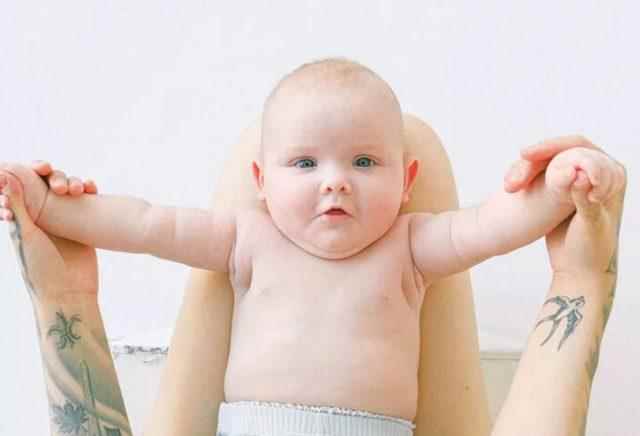Hernia, popularly known as hernia, is the outward sliding of the tissue or muscles that keep the organ in place, in its natural cavity, and its displacement. Hernia, which negatively affects daily life, causes swelling under the skin. There are hernia types such as abdomen, groin, waist, neck. Having warned about inguinal hernia in children, Pediatric Surgery Specialist Assoc. Dr. Süleyman Çelebi said, “Inguinal hernia can be treated with a simple surgical operation. If left untreated, however, serious complications can develop, although rare. When a hernia gets stuck, strangulation can occur. This means that the blood supply to the child’s intestines is cut off. The lack of blood flow to the child’s intestines can cause tissue death. “This is an extremely serious and medical emergency,” he said. Stating that inguinal hernia in infants and children is a health problem that manifests itself with swelling in the inguinal region, Assoc. Dr. Süleyman Çelebi gave information about the symptoms and treatment of the disease.
MAIN SYMPTOM UNDER THE SCUBA
Stating that a hernia occurs in the groin when the intestines exceed the abdominal wall, Pediatric Surgery Specialist Assoc. Dr. Süleyman Çelebi said, “The main symptom of an inguinal hernia in babies is a swelling under the skin in the groin or scrotum. Inguinal hernia treatment is performed by surgical method.
YOU CAN SEE BLASTING WHEN YOUR CHILD Cries

Assoc. Dr. Süleyman Çelebi shared the following information about how an inguinal hernia occurs in a baby:
“Spoon; It is the area between the abdomen and thighs. Inguinal hernia; It occurs when part of the intestine passes through an opening in the abdominal wall, the inguinal canal. The inguinal canal extends from the baby’s tummy to the genitals. The inguinal canal should close before birth, but sometimes it does not close completely. This leaves an open hole for your child’s intestines to pass through the inguinal canal. An abnormal swelling or mass may appear in your child’s groin or scrotum. Sometimes you may only notice bloating when your child is crying, coughing or straining.”
Develops on one side of the groin
Stating that inguinal hernias usually develop on only one side of the child’s groin, Assoc. Dr. Süleyman Çelebi said, “They develop more frequently on the right side than on the left side. In about 10% of cases, inguinal hernias develop on both sides of the groin.
IT IS MOST SEEN IN CHILDREN UNDER 6 YEARS OF AGE.

Emphasizing that inguinal hernia can affect infants, children and adults, Assoc. Dr. Çelebi said, “It is most common in children under the age of 6. About 90 percent of inguinal hernias seen in newborns are in male babies. Inguinal hernias are more common in premature babies. Inguinal hernia is seen in 1-5% of healthy, full-term male babies. “30% of premature babies are born with an inguinal hernia,” he said.
NOT TREATED CAN LEAD TO DEATH

Stating that inguinal hernia can be treated with a simple surgical operation, but rarely serious complications may develop if left untreated, Assoc. Dr. Çelebi listed these problems as follows:
“Stuck or incarcerated hernia: Incarceration occurs when the hernia contents become compressed. When this occurs, the physician cannot push the hernia back into the child’s abdomen.
“Strangulated hernia: Strangulation can occur when a hernia gets stuck. This means that the blood supply to your child’s intestines is cut off. The lack of blood flow to your child’s intestines can cause tissue death. This is an extremely serious and medical emergency.”
PAY ATTENTION TO THE SYMPTOMS
Underlining that the main symptom of inguinal hernia in children is a visible swelling under the skin in the groin or scrotum of the child, Assoc. Dr. Süleyman Çelebi said, “The swelling may increase after your child cries or strains. The bulge can come and go. Your child may shrink or disappear as they relax or sleep. “There may be a bulge on one or both sides of their groin,” he said. Assoc. Dr. Çelebi listed other important symptoms of inguinal hernia seen in childhood as follows:
“Pain and discomfort that improves with rest
“Heaviness or pressure in your groin
“Swollen scrotum
“Burning sensation in the protrusion area.
Grumpy and feeding difficulties in infants.”

IF YOU HAVE THESE SYMPTOMS, CONSULT A DOCTOR
Noting that if the child has an incarcerated (stuck) hernia or a strangulated hernia, it is a medical emergency, Assoc. Dr. Çelebi said that if any of the following symptoms are observed, immediate medical attention should be sought:
“Severe pain or tenderness
“Redness and bruising around the protrusion area
“Anorexia
“Fire
“Nausea and vomiting
Bloody stool.”
Inguinal hernia can also be seen in baby girls
Stating that inguinal hernias can be seen more rarely in female babies than in male babies, Assoc. Dr. Çelebi said, “Girls also have inguinal canals, and inguinal hernias may include some parts of their reproductive systems such as ovaries.”

THE SURGERY TAKES LESS THAN 1 HOUR
Emphasizing that the treatment of inguinal hernia is performed by surgery, Assoc. Dr. Çelebi said, “Surgery in children can be performed in two ways as open or closed method. In the open method, the inguinal region is entered with an incision of approximately 2 cm. The closed method is done with the help of a camera through an incision of 5 millimeters from the navel. The most important advantage of the closed method over the open method is the ease of making bilateral inguinal hernias through a single entry hole. Another advantage of closed surgery is that the operation is completed without touching the vein and nerve structures leading to the testis in men in the closed system. This is especially important in patients who have had open surgery but have had a recurrent inguinal hernia. The surgery usually takes less than 1 hour and patients usually undergo an outpatient procedure. This means that the child can go home on the day of the procedure. Before the operation, the anesthesiologist gives general anesthesia to the child. An anesthesiologist is a doctor who specializes in pain relief. General anesthesia relaxes the child’s muscles and puts them to sleep. The child will not feel pain during the surgery. The child can go home a few hours after the surgery. If the child is premature or has certain medical conditions, he may need to spend the night in the hospital for observation. The doctor will schedule a follow-up appointment within 7-10 days after the surgery to assess the child’s condition,” he concluded.
